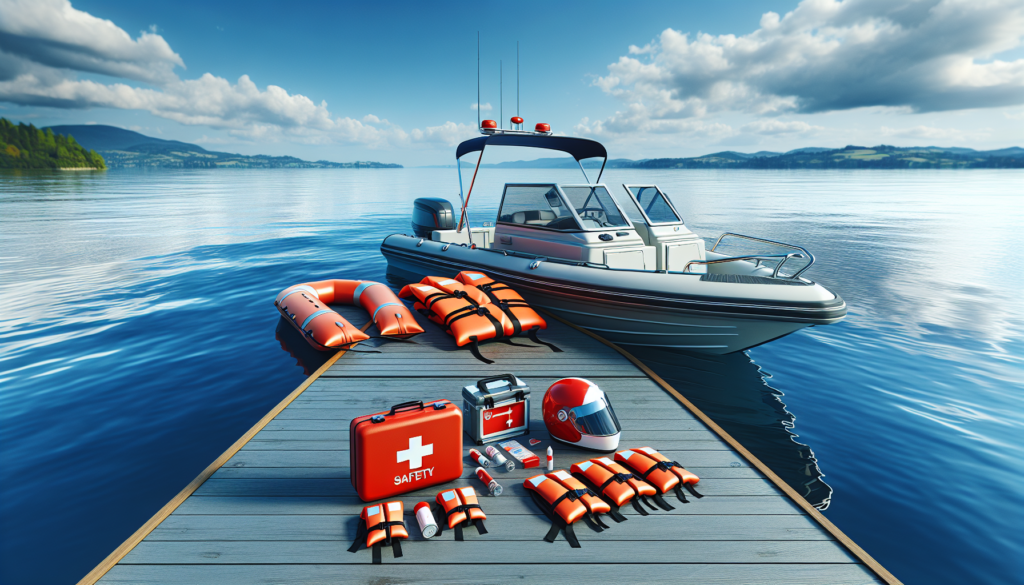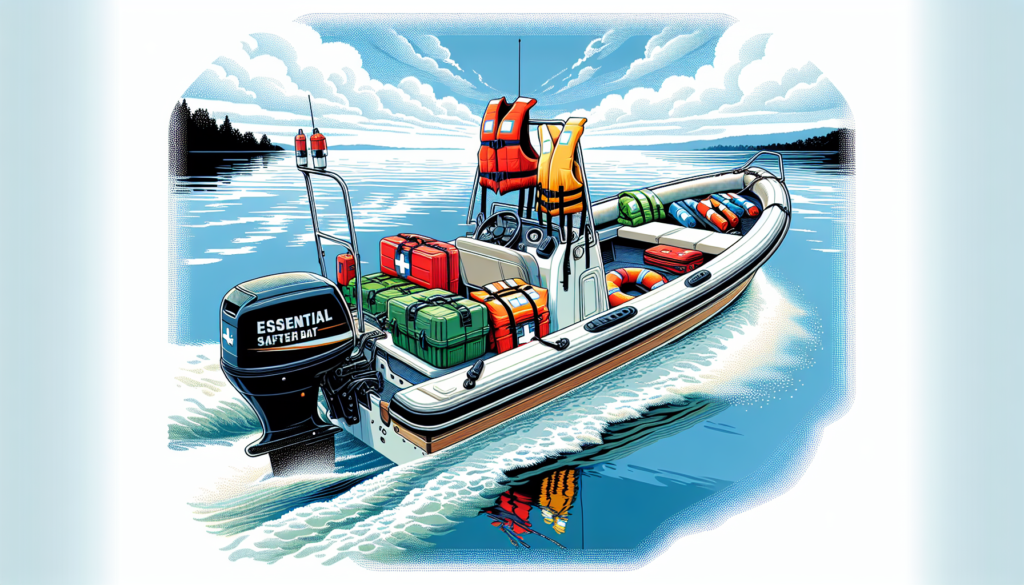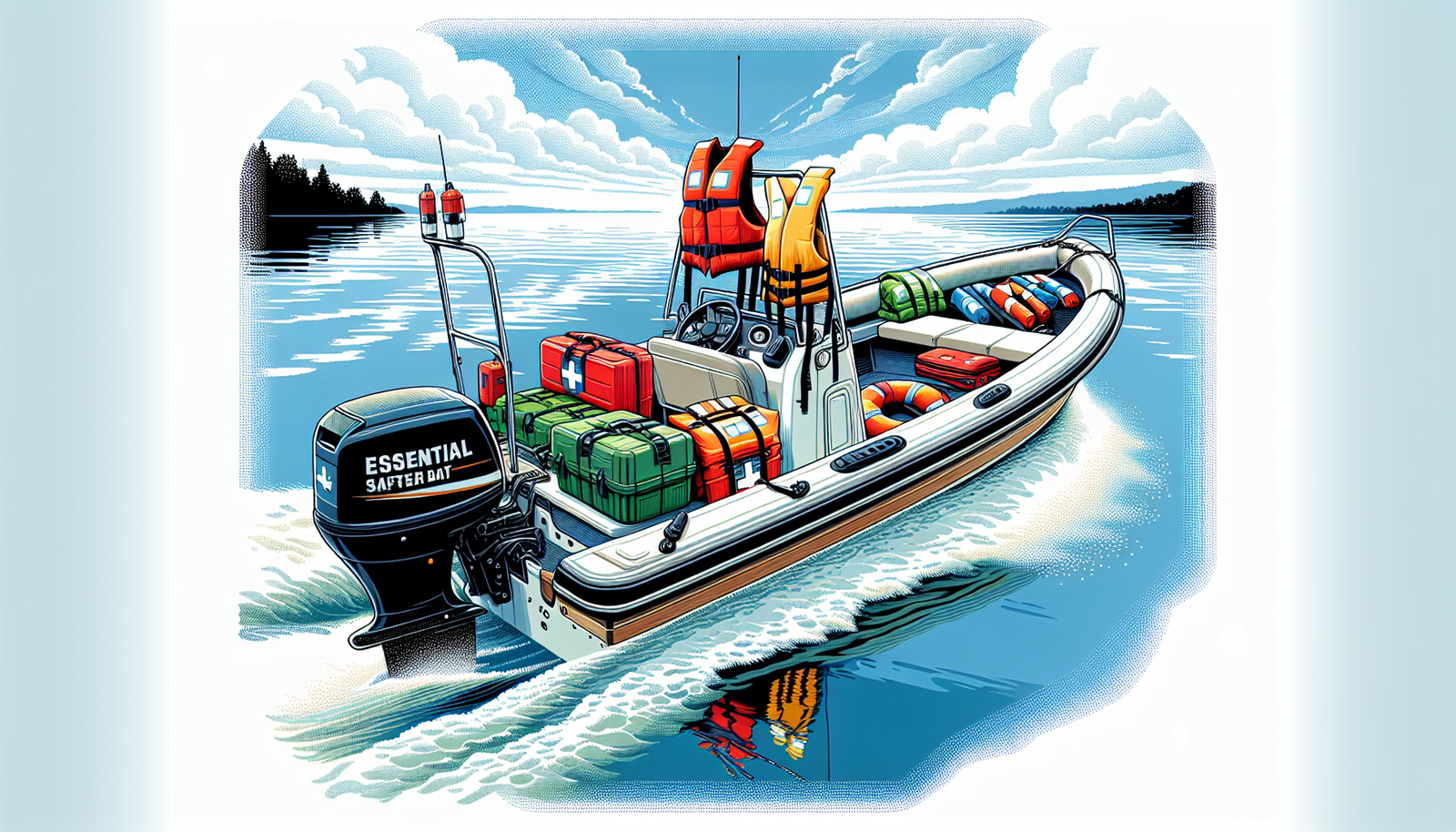Under the glint of the sun and the gentle sway of calming waves, there is an unwritten call to exhilarating adventures at sea. And yet, the undeniable thrill should never overshadow the importance of safety, especially when you’re navigating waters with small-engine boats. This will be your guide through the oft-overlooked safety measures to ensure you don’t just enjoy your cruise, but you come back home in one piece as well. “Top Safety Precautions for Boating with Small Engines” isn’t just a dry textbook, it aims to be your lifebuoy in times of need, providing crucial knowledge that every seafarer should master.

Understanding Your Boat’s Engine
Keeping your boat in top shape means understanding the ins and outs of its engine. It’s the heart of your watercraft, and without it, you could end up stranded and at the mercy of the waves.
Recognizing different types of small boat engines
In knowing your boat, it’s vital to recognize the different types of small boat engines out there. Mainly, you have outboard motors which are portable, easy to maintain, and ideal for smaller crafts. Then there are inboard motors that are planted inside the boat’s hull. These are powerful, smooth, and are typically used in larger boats.
Knowing your engine’s power and limitations
Be aware of your engine’s power and limitations. This is not just about speed, but efficiency, fuel consumption, and safety. A powerful engine might get you out on the water fast, but if it’s too much for your boat to handle, it can become a safety hazard.
Maintenance checks for optimal engine performance
Perform regular maintenance checks to ensure optimal engine performance. Ensure that oil levels are correct, replace spark plugs as necessary, and check the belts for any signs of wear and tear.
Common signs of engine trouble
There are some common signs of engine trouble to be aware of. These can include difficulty starting the engine, abnormal sounds or vibrations, and unexplained changes in engine performance. Whenever you experience these, it’s advisable to seek out a marine mechanic immediately.
Equipping Your Boat With Essential Safety Equipment
When it comes to boating, safety should always be your top priority. Remember, a well-equipped boat is a safe boat.
Including life jackets and flotation devices
Have everyone onboard wear life jackets and ensure you have extra flotation devices. These are not just for comfort, but they can save lives in case of an unexpected boat capsize or someone falling overboard.
Having a working fire extinguisher onboard
Fire onboard can be disastrous. Therefore, having a workingfire extinguisher onboard is essential. It’s a requirement by law, and it could mean the difference between a minor incident and a major catastrophe.
Carrying necessary communication tools
Make sure you have the necessary communication tools onboard. This includes devices like a VHF marine radio and a mobile phone in case of emergencies.
Keeping a well-stocked first aid kit
Accidents can happen. Having a well-stocked first aid kit onboard is crucial. Consider including bandages, antiseptic wipes, tweezers, seasickness medication, and any other medical supplies that could be needed in an emergency.
Practising Good Fuel Handling
Proper fuel handling may seem like a mundane detail, but it plays a significant role in your boat’s performance and safety.
Proper storage and handling of fuel
Adopt practices for proper storage and handling of fuel. Ensure you use approved marine fuel tanks, and while refueling, be wary of any spillage. It’s not just hazardous, but harmful to the environment.
Preventing and dealing with fuel leaks
Prevent and deal with fuel leaks promptly. Regularly check your fuel lines and connections for any sign of wear, fraying, or damage. Also, familiarize yourself on what to do in case of a fuel leak.
Understanding the impact of weather conditions on fuel handling
Weather can impact fuel handling. Cold weather can cause condensation in your fuel tank that may lead to engine problems, while heat can cause fuel to expand resulting in overflows and leaks.
Fueling procedure safety tips
Follow safe fueling procedures. Always turn off the engine while fueling, refrain from smoking, and listen to any instructions given by the fuel dock attendant.

Following Safe Boating Procedures
Safe boating is not just about having the right equipment. It also involves following proper procedures.
Developing a float plan and sharing it
Develop a float plan and share it with someone reliable who isn’t on the boat. This should include your itinerary, the boat’s description, and details of everyone onboard. If anything goes wrong, they’ll know where to look for you.
Understanding right-of-way rules
Just like on the road, there are right-of-way rules on the water that must be understood and followed to prevent accidents.
Being aware of waterway restrictions
Be aware of waterway restrictions. Always abide by speed limits, no-wake zones, and know which areas are off-limits for boating to avoid collisions or disturbances to wildlife.
Practicing safe anchoring techniques
Safe anchoring is integral to secure a boat when stopping. Practice safe anchoring techniques, including choosing an appropriate ground tackle and ensuring your boat is well clear of other boats and obstacles.
Navigating Through Adverse Weather Conditions
Weather conditions can play a significant role in your boating experience. It’s essential to know how to handle all kinds of weather.
Monitoring and understanding weather forecasts
Monitor and understand weather forecasts before your trip and while you’re on the water. Reschedule if there’s an impending severe storm, and stay vigilant for unexpected weather changes.
Operating a boat with a small engine in rough waters
Operating a boat with a small engine in rough waters can be challenging. The best advice is to avoid rough water whenever possible, but if you find yourself in it, slow down, keep the bow pointed into the waves, and make your way to safer waters.
Safe boating strategies during storms
In case of storms, there are safe boating strategies to employ. Don these include reducing speed, pointing the bow into the wind, and if possible, finding a sheltered area to wait out the storm.
Dealing with fog while on water
Fog can severely limit visibility, making navigation tricky. It’s crucial to reduce your speed, make frequent use of your horn, and utilize your navigation systems in such scenarios.
Proficient Use of Navigation Equipment
Knowing how to use your navigation equipment proficiently will make your boating journey safer and more enjoyable.
Comprehending the use of GPS and Compass
Learning about the use of GPS and compass not only helps you avoid getting lost, but it’s also a crucial part of safe boating. GPS can provide your exact coordinates while a compass, even when there’s no signal, can help you find your heading.
Understanding the importance of depth finders and charts
Depth finders and charts can help you to avoid dangerous waters. They let you know the depth of water, which is crucial, especially in areas that are unfamiliar or have shallow sandbars.
How to interpret marine radar
Marine radar is another vital tool to interpret. While primarily used to prevent collisions, it’s also beneficial in navigating through bad weather.
Utilizing sonar technology for boating
Use sonar technology for mapping the underwater landscape. It works by bouncing sound waves off the seafloor and calculating how long it takes the sound to return. This helps determine the depth of water and identify fish, helping you avoid dangerous zones.
Maintaining Effective Communication Onboard and Ashore
While on the water, maintaining a line of communication is key to your safety and that of everyone onboard.
Learning basic marine communication protocols
Understanding basic marine communication protocols can make your boating experience less stressful and safer. This includes knowing the specific VHF channels for distress, hailing, weather, and ship-to-shore communications.
Being adept at using VHF marine radio
Being adept at using a VHF marine radio is a lifesaver. VHF radios have a range that extends far beyond that of a mobile phone and, in case of an emergency, can broadcast your distress signal to multiple vessels at once.
Maintaining channels of communication with the shore or rescue services
Ensure to maintain open channels of communication with the shore or rescue services, so they can be immediately alerted should an emergency arise.
Understanding emergency signals and distress flares
Take time to understand emergency signals and how to properly use distress flares. This knowledge can go a long way should you find yourself facing an unexpected situation on the water.
Know What to Do in Case of an Engine Overheat
An engine that overheats can be potentially dangerous. Here’s what to do if you find yourself in such a situation.
Identifying signs of an overheating engine
Learn to identify the signs of an overheating engine. These may include a sudden increase in engine temperature, steam or smoke coming from the engine, and a loss of power.
Actions to take when an engine begins to overheat
If your engine begins to overheat, take immediate action. This includes shutting the engine off, allowing it to cool, checking for possible causes such as low coolant levels or a malfunctioning water pump, and seeking professional help if necessary.
Preventing engine overheating
There are measures you can take to prevent engine overheating. Regular engine maintenance, keeping an eye on the coolant level, and avoiding pushing the engine too hard can help prevent this troubling occurrence.
Engine cooling systems care
Take care of your engine’s cooling system. Regular servicing and promptly addressing any detected issues can ensure your engine stays cool, even under extreme conditions.
Comply with Environmental Guidelines
As someone who enjoys spending time on the water, you have a responsibility to ensure your activities don’t harm the environment.
Adhering to noise and speed regulations
Adhere to noise and speed regulations, which are in place to minimize disturbances to wildlife and maintain a peaceful atmosphere for everyone on the water.
Managing waste and discharge on the boat
Ensure to manage waste and discharge properly. Dispose of trash responsibly and use approved marine sanitation devices to handle sewage, keeping our waters clean.
Understanding the impact of boating on wildlife
It’s crucial to understand the impact of boating on wildlife. Be mindful not to disturb habitats, keep a respectful distance from wildlife, and avoid areas where wildlife is breeding or nesting.
Conserving fuel and energy while boating
Boating responsibly also involves conserving fuel and energy. Use your boat’s engine efficiently, cut the engine when possible, and consider adopting renewable energy solutions like solar panels for some of your boat’s power needs.
Acquiring Basic First Aid and Rescue Skills
Knowing some essential first aid and water rescue skills can be the difference between life and death in an emergency situation.
Learning how to perform CPR
Learn how to perform CPR. With drowning being a real risk on the water, knowing CPR can save a life until medical professionals arrive.
Knowing how to treat burns, cuts, and fractures
More common injuries on boats include burns, cuts, and fractures. Acquire the knowledge to treat such ailments.
Handling onboard emergency situations
Prepare yourself to handle onboard emergency situations. From a man overboard scenario to a collision, understanding how to react quickly and efficiently is key to ensuring safety.
Understanding water rescue procedures
Lastly, know how to perform water rescues. When circumstances take a turn for the worst, knowing how to properly rescue someone from the water without putting yourself in danger can be crucial.

